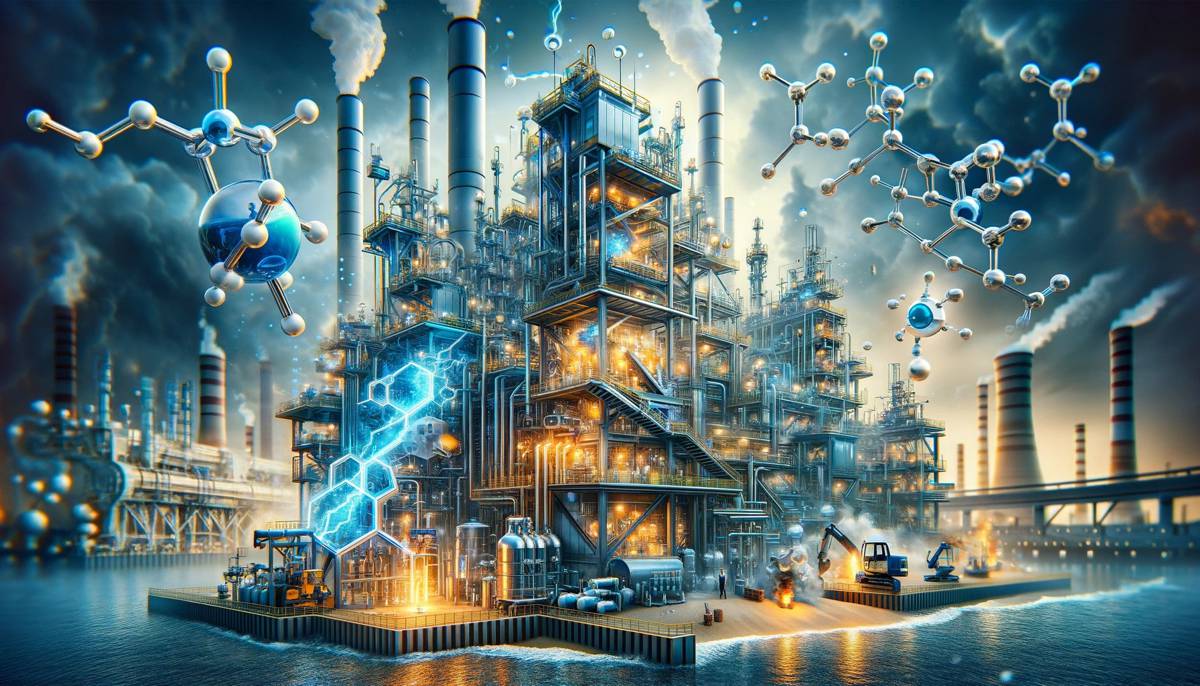Revolutionizing Chemical Catalysis
In a world constantly seeking more efficient and sustainable industrial processes, a ground-breaking discovery has emerged from the laboratories of the Massachusetts Institute of Technology (MIT).
This discovery, with the potential to significantly enhance the efficiency of chemical catalysis—a cornerstone in myriad industrial applications from petrochemical processing to pharmaceutical manufacturing—has the industry buzzing with excitement.
A Leap in Catalytic Efficiency
At the heart of this revelation is a simple, yet profoundly effective technique. By applying a modest external voltage, MIT researchers have managed to amplify the efficiency of certain acid-catalysed chemical reactions by up to a staggering 100,000 times.
This innovation, detailed in the prestigious journal Science, stems from the collaborative efforts of MIT graduate student Karl Westendorff, alongside professors Yogesh Surendranath, Yuriy Roman-Leshkov, and their team.
Bridging Two Worlds: Electrochemical and Thermochemical Catalysis
Historically, the realms of electrochemical and thermochemical catalysis have operated independently, seldom crossing paths. Electrochemical reactions, known for their involvement in redox processes—where electrons are gained or lost—have seen similar enhancements in efficiency. However, the application of electrical energy to boost non-redox, acid-catalysed reactions represents uncharted territory.
“This overlooked parameter of surface potential is something we should pay a lot of attention to because it can have a really, really outsized effect,” notes Surendranath, highlighting the significance of electrostatic environments on reaction rates.
A Paradigm Shift in Catalysis
The traditional view of catalysis focuses on the chemical binding energy of molecules at active sites. Yet, this discovery underscores the critical role of the electrostatic environment, marking a paradigm shift in how we conceptualize and optimize catalytic reactions.
“We’re very excited,” Surendranath shares, emphasizing the potential of this finding to revise foundational understandings of surface catalytic reactions across both electrochemical and thermochemical spectrums.
From Laboratory to Industry: The Path Ahead
The implications of this research extend far beyond academic curiosity. With a provisional patent application already filed, the team is exploring ways to scale their findings for industrial application.
Westendorff envisions the development of novel reactor designs that leverage this strategy, potentially revolutionizing the efficiency with which chemical materials are produced.
A Confluence of Disciplines
The separation between electrochemical and thermochemical catalysis communities has long been a barrier to innovation. This study not only highlights a shared boundary but also opens the door for cross-disciplinary collaboration, promising a fertile ground for future breakthroughs.
“It’s not just that people don’t really talk to each other. There are deep methodological differences between how the two communities conduct experiments. And this work is really, we think, a great step toward bridging the two,” Westendorff explains.
The Bigger Picture
In an era where efficiency and sustainability are paramount, the ability to significantly enhance reaction rates with minimal energy input could be a game-changer. This discovery not only paves the way for more efficient production processes but also contributes to a more holistic understanding of catalytic reactions at interfaces.
As the chemical industry continues to evolve, the integration of electrochemical characteristics into thermochemical catalysis could redefine our approach to manufacturing, environmental protection, and energy conservation.
In Summary
MIT’s breakthrough offers a tantalizing glimpse into the future of chemical processing, where efficiency and sustainability go hand in hand. As we stand on the brink of a new era in industrial catalysis, the potential for innovation is boundless, heralding a more efficient, sustainable future for industries worldwide.




















